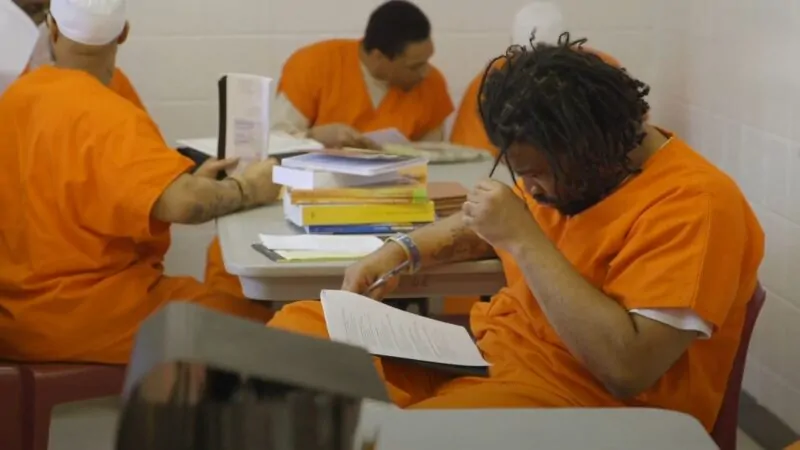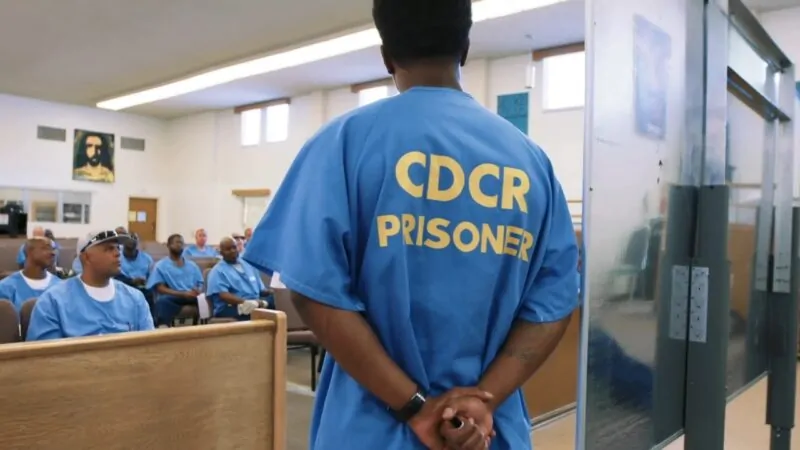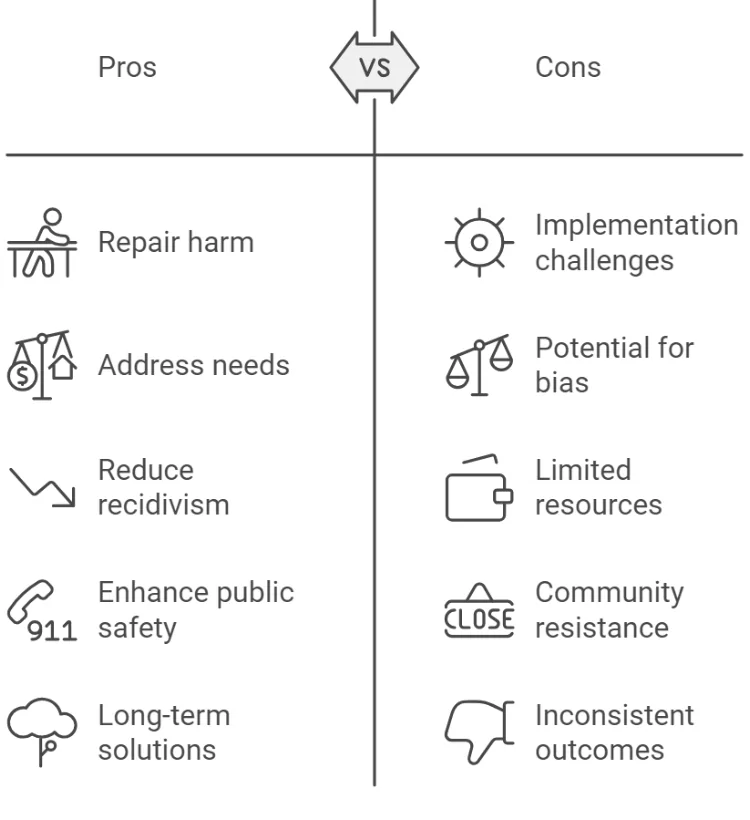The United States faces ongoing challenges in crime, law enforcement, and incarceration rates in 2025.
Recent data shows some encouraging trends, with violent crime rates decreasing across most categories in 2022. Only robbery saw an increase during this period.
Despite these efforts, the U.S. still grapples with a complex web of:
- Federal
- State
- Local
- Tribal criminal justice systems
That is why we would like to discuss US incarceration statistics in greater detail, touching on every relevant segment.
Prison System Analysis

Well, how many people are in prison in the US? What do incarceration statistics say?
- State prisons (1,566)
- Federal prisons (98)
- Local jails (3,116)
- Juvenile facilities (1,323)
- Immigration detention centers (142)
Male inmates continue to outnumber females, though the female prison population has grown at a faster rate in recent years. The average age of inmates has increased, presenting new healthcare challenges for prison systems.
In 2021, nearly 5.6 million people were incarcerated or under supervision, according to the Bureau of Justice Statistics, while an estimated 6.9 million individuals were admitted to jail over the year.
On the 4th of January 2025, the Federal Bureau of Prisons released a report that shows the inmate age share:
| Age Range | Number of Inmates | % of Inmates |
|---|---|---|
| Under 18 | 8 | 0.0% |
| Ages 18-21 | 1,334 | 0.9% |
| Ages 22-25 | 6,996 | 4.5% |
| Ages 26-30 | 16,683 | 10.8% |
| Ages 31-35 | 25,888 | 16.8% |
| Ages 36-40 | 26,990 | 17.5% |
| Ages 41-45 | 25,962 | 16.9% |
| Ages 46-50 | 19,006 | 12.3% |
| Ages 51-55 | 12,976 | 8.4% |
| Ages 56-60 | 8,342 | 5.4% |
| Ages 61-65 | 5,209 | 3.4% |
| Over 65 | 4,590 | 3.0% |
Prison Conditions and Management
Overcrowding remains a critical issue in many facilities, leading to strained resources and increased tensions.
Some prisons operate at over 100% capacity, impacting living conditions and staff-to-inmate ratios.
Healthcare provision in prisons often falls short of community standards. Chronic understaffing in correctional facilities exacerbates these challenges and affects overall prison management.
Violence within prisons continues to be a concern, with incidents of inmate-on-inmate and inmate-on-staff assaults reported. Efforts to improve security measures and conflict resolution programs are ongoing.
Interesting Fact: The US has 5% of the world population, but has 25% global prison population.
Rehabilitation and Reentry Programs

Education programs in prisons have shown positive outcomes. GED and vocational training initiatives help inmates acquire valuable skills for post-release employment.
Substance abuse treatment programs have expanded in many facilities, addressing a key factor in recidivism.
Mental health services, while improving, still require significant expansion to meet inmate needs. There is a problem of prisoners with severe mental health issues spending months in solitary.
Job training partnerships with local businesses have increased, providing inmates with practical work experience. Reentry programs focused on housing, employment, and family reunification show promise in reducing recidivism rates.
Funding for these programs remains a challenge, with budget constraints limiting their reach and effectiveness. Innovative approaches, such as public-private partnerships, are being explored to expand rehabilitation efforts.
What do Incarceration Statistics say About US Crime Rates?

In 2022, the violent crime rate declined for the second year in a row, reaching 380.7 per 100k people.
Conversely, the property crime rate saw its first increase since 2001, rising by 6.7% to 1,954.4 per 100k people.
Notably, larceny-theft crime rates also grew for the first time in two decades, with a 7.4% uptick as per USA Facts.
While violent crime rates per 100k people decreased across all categories in 2022, robbery was the exception, showing an increase.
Federal, state, and local governments allocated $282.1 billion to law enforcement and corrections in 2021, marking the highest expenditure since at least 1980, after adjusting for inflation.
By 2022, the number of police officers per 100k people had dropped by 8.9% from its peak in 2009.
In 2021, nearly 5.6 million people were in prison, jail, or on probation or parole, with an estimated 6.9 million admitted to jail throughout the year.
The percentage of state prisoners whose most serious offense was a drug crime has been declining annually since 2007.
Cybercrime remained a growing threat, with identity theft and online fraud cases rising, with an average of 97 cybercrime victims per hour, which means there is a victim of cybercrime every 37 seconds as per AAG-IT.
In 2022, the firearm death rate decreased to 14.5 deaths per 100k people, yet it remained higher than any year between 1999 and 2020.
As we can see in the report compiled by Statista, the US has one of the highest incarceration rates in the world:
| Country | Incarceration Rates (per 100k) |
|---|---|
| El Salvador | 1,086 |
| Cuba | 794 |
| Rwanda | 637 |
| Turkmenistan | 576 |
| American Samoa | 538 |
| United States | 531 |
Regional Crime and Incarceration Statistics
As you can imagine, incarceration statistics are different throughout the country.
Major cities experienced a 6% overall decrease in violent crime, with some metropolitan areas reporting even larger reductions as per USA Today.
Of course, this directly results in a drop in overall US incarceration statistics.
The Northeast saw the most significant drops in violent crime rates. Several cities in this region implemented community policing initiatives that showed promising results.
Midwestern states grappled with an increase in drug-related crimes, particularly those involving opioids and methamphetamines. Rural areas in this region faced challenges with limited law enforcement resources.
Western states reported mixed results. While some coastal cities saw crime reductions, inland areas experienced increases in property crimes and gang-related activities.
Southern states focused on combating human trafficking, with several successful multi-agency operations disrupting major trafficking networks.
Interesting Fact: According to NeighborhoodScout, Memphis, Tennessee is the most dangerous city in the US, with a crime rate of 97.64 incidents per 1,000 residents.
Local Police Initiatives

Community VEg remains a cornerstone of local law enforcement strategies.
Many departments are implementing community engagement programs to build trust and cooperation with residents.
- Neighborhood watch groups
- Youth mentoring
- Regular community meetings
Crisis intervention teams are becoming more common, with officers receiving specialized training to handle mental health emergencies.
By 2022, the number of police officers per 100k people had decreased by 8.9% from its peak in 2009.
Federal Law Enforcement Agencies
The FBI has increased its digital forensics capabilities to tackle the rise in online criminal activities.
Task forces combining federal, state, and local resources are targeting specific issues like human trafficking and drug distribution networks.
These collaborative efforts enhance information sharing and operational effectiveness.
The Department of Homeland Security is strengthening border security measures, employing advanced surveillance technologies and data analytics to detect and prevent illegal entries.
Technological Advances in Policing
Artificial intelligence and data analytics are revolutionizing crime prediction and resource allocation.
Predictive policing software helps departments identify high-risk areas and optimize patrol routes.
Body-worn cameras have become standard equipment, improving accountability and providing crucial evidence. Naturally, their influence is increasing incarceration rates.
Some departments are exploring facial recognition technology, though its use remains controversial due to privacy concerns.
- Search and rescue operations
- Crowd monitoring
- Accident scene reconstruction
These unmanned aerial vehicles offer a cost-effective way to gather real-time intelligence and improve situational awareness.
Criminal Justice Reforms
Violent crime rates fell for the second consecutive year in 2022, as we stated earlier.
The trend is influencing sentencing reforms across the country. Many states are reevaluating mandatory minimum sentences for non-violent offenses.
Michigan passed legislation requiring parole conditions to be tailored to individual risks and needs.
- Drug treatment programs
- Community service
- Electronic monitoring
These alternatives seek to rehabilitate offenders while reducing prison populations and costs.
Prison Overhaul Programs

Efforts to improve prison conditions and inmate outcomes are gaining traction. With high incarceration statistics in the US, it is quite hard to provide much-needed care to every inmate.
Educational programs within prisons are expanding, offering inmates opportunities to earn degrees or vocational certifications.
- Mental health support
- Substance abuse treatment
- Job skills training
These initiatives aim to better prepare inmates for reintegration into society upon release. Some states are also exploring early discharge from probation for those who comply with conditions and cannot afford associated fees.
Restorative Justice Initiatives
Restorative justice programs are emerging as alternatives to traditional punitive measures.
These approaches focus on repairing harm caused by criminal behavior and addressing the needs of victims, offenders, and communities.
- Victim-offender mediation
- Community conferencing
- Peacemaking circles
Public opinion has shifted towards addressing the root causes of crime rather than solely relying on strict sentencing. This change is driving the implementation of more holistic approaches to criminal justice.
Advocates argue that these reforms not only reduce recidivism but also enhance public safety. By focusing on rehabilitation and community reintegration, restorative justice aims to create long-term solutions to crime prevention.
Methodology
The methodology used to gather the content for this report on U.S. incarceration statistics and crime rates involved a comprehensive review of publicly available data from multiple authoritative sources.
Key statistics were sourced from governmental databases, such as the Federal Bureau of Prisons (BOP) and the Bureau of Justice Statistics (BJS), which provided accurate figures on inmate populations and correctional facilities.
National crime data was gathered from the Federal Bureau of Investigation’s (FBI) Uniform Crime Reporting (UCR) program, offering insight into violent and property crime trends across the country.
Further research involved reviewing reports from independent research bodies, such as USA Facts, which compiles and analyzes crime and incarceration data.
Statistical analyses from organizations like Statista were also utilized to compare the U.S. incarceration rates with those of other countries globally. Information on prison conditions, rehabilitation programs, and reentry initiatives was derived from government and non-governmental reports, as well as academic research that tracks trends in criminal justice reform.
To ensure an understanding of regional disparities, data on crime rates and local law enforcement practices were collected from city-level reports and media sources, such as USA Today, which provides context on regional crime trends.
Final Reflections
As you can see, there are many things we can get from observing the US incarceration rates and crime statistics.
- Violent crime rates have decreased for the second consecutive year, reaching 380.7 per 100k people in 2022.
- Property crime rates rose for the first time since 2001, increasing by 6.7% to 1,954.4 per 100k people.
- Larceny theft saw a notable uptick of 7.4% in 2022.
- Firearm death rate increased from 13.7 to 14.8 deaths per 100k people between 2020 and 2021.
Sources
- Prison Policy Initiative – Mass Incarceration: The Whole Pie 2024
- US Department of Justice – Correctional Populations in the United States
- Federal Bureau of Prisons – Inmate Age
- American Civil Liberties Union – Overcrowding and Overuse of Imprisonment in the United States
- National Liberty of Medicine – The Need for Higher Standards in Correctional Healthcare to Improve Public Health
- Ballard Brief – Mass Incarceration in the United States
- GED – Life After Getting Your GED
- The Guardian – Prisoners with severe mental health needs spending months in isolation
- Brennan Center – Violent Crime Is Falling Nationwide
- USA Facts – What kinds of property crime are on the rise?
- AAG – The Latest 2025 Cyber Crime Statistics
- Statista – Countries with the largest number of prisoners
- USA Today – Violent crime rates in American cities largely fall back to pre-pandemic levels
- National Liberty of Medicine – Current Rural Drug Use in the US Midwest
- Neighborhood Scout – Memphis, TN Crime Rates
- Post University – Impact of Digital Forensics in Modern Crime Scene Investigations
- Vera Institute – Playbook for Change?
- BCBE – The True Meaning of Community Service
- Prison Policy Initiative – Winnable criminal justice reforms
- The Hill – A fresh dialogue on criminal justice reform changes the game
- USA Today – Facing rollbacks, criminal justice reformers argue policies make people safer








